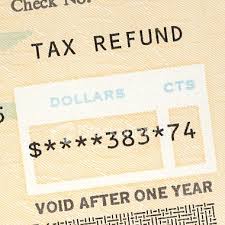 Budget 2010 has brought tremendous relief to the Indian service exporters. Various positive amendments have been introduced in the Budget 2010, which should make exporters’ lives a lot easier, at least on the service tax front.
Budget 2010 has brought tremendous relief to the Indian service exporters. Various positive amendments have been introduced in the Budget 2010, which should make exporters’ lives a lot easier, at least on the service tax front.
The primary reason is the simplification of the Export of Service Rules (Export Rules). The Export Rules prescribe the conditions to determine when a service qualifies as exports. When the Export Rules were initially introduced in March 2005, they provided for two conditions to determine whether a service qualifies as exports.
The first condition was that the service should be in relation to an immovable property located outside India; or the service should be performed fully or partly outside India; or the service recipient should be located outside India. Of these, the condition which applied to a particular service was specified in the Export Rules. The second condition was that the consideration for the service should be received in convertible foreign currency.
However, in April 2006, the Export Rules were amended to provide an additional condition for a service to qualify as exports — that the service should be ‘delivered and used outside India’. What constituted ‘delivered and used outside India’ has been a matter of considerable litigation. In the context of services, which are inherently intangible in nature there was complete lack of clarity on the meaning of these terms.
In order to simplify the Export Rules, the condition of ‘service delivered outside India’ was replaced with the condition of ‘service provided from India’ in March 2007. While this partially reduced the confusion, litigation regarding the term ‘use of service outside India’ continued. In order to resolve this, the Central Board of Excise and Customs (CBEC) by a circular issued in February 2009, clarified that the meaning of the term ‘used outside India’ should be understood in the context of the characteristic of the particular category under theExport Rules in which that service falls.
By this interpretation, given that the term ‘use’ has to be interpreted in light of the other conditions prescribed for a service to qualify as ‘exports’, the condition of ‘use outside India’ became redundant. Though, it seemed that theexport circular would bring some hope to the Indian service exporter, it did not last long, since the Delhi High Court rejected a stay application filed by Microsoft in this regard.
With the deletion of the conditions of ‘provided from India’ and ‘used outside India’ from the Export Rules, the finance minister has sought to address all controversy arising in this regard. This amendment in the Export Rules is expected to minimise litigation on the aspect whether a service qualifies as exports. Hence, this is an extremely welcome move for service exporters from India.
The second reason for the cheer is that Budget 2010 has also sought to simplify the procedure for verification and grant of export refunds. The service tax legislation provides for refund of service tax paid on input services used in relation to export of services.
However, till date minimal service tax refunds have been granted by the service tax authorities and typically refund claims are rejected on the basis of a very technical interpretation that the input services are not ‘used in’ export of services.
This basis of rejection has been sought to be addressed with the Budget 2010, which provides that in order to qualify for a refund, it is not essential that the input service should be ‘used in’ export of service, but it is sufficient if the input service is ‘used for’ export of service. This technical amendment has been made on a retrospective basis and is a welcome step in resolving past disputes and in minimising disputes for future refund claims.
The third reason is that Budget 2010 has sought to amend the procedure to expedite processing of refund claims, which has been a significant pain area forthe service exporters. In the past, for processing of the refund claims the service tax authorities seek to verify all input services, that have been included in the refund claim. In most cases such verification can take weeks for a single monthly refund claim of a large service exporter. In order to expedite the processing of refund claims and avoid the detailed verification of the refund claims, it has been provided that a declaration is required to be filed by the assessee with the jurisdictional authorities, duly certified by the statutory/ tax auditor of the exporter. By this amendment a recent clarification issued by the CBEC, has been introduced in the legislation itself.
This step should aid in processing of future refund claims on an expedited basis.
Overall the Budget 2010 has provided enough reasons for the Indian service exporter to cheer. The only hope is that these will be implemented in spirit by the authorities at the ground level.
http://businessfinanceindia.blogspot.com/






